The posterior and inferior surfaces articulate with the tibia and menisci of the knee while the anterior surface articulates with the. There are three muscles that arise from the posterior aspect of the lateral femoral condyle.
There is a significant difference in articular cartilage thickness between the medial and lateral posterior femoral condyles in patients undergoing unicompartmental knee arthroplasty.
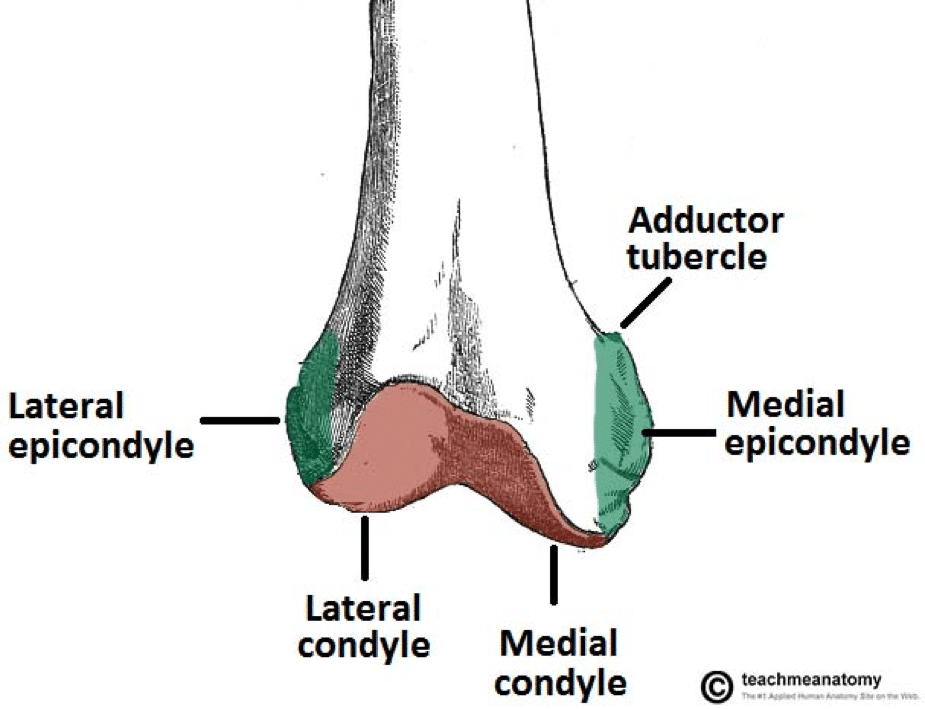
. The lateral condyle is called the capitulum and the medial condyle is called the trochlea. The femoral condyles articulate or contact with the tibia and on the medial side this is in the medial tibial plateau and the medial meniscus and on the outside of the knee is known as the lateral tibial plateau in the. The femoral condyles form the trochlear groove that provides the articulating surface of the femur.
Both condyles are smooth and rounded posteriorly to allow for motion and level out inferiorly allowing for articulation with the tibia. The Knee Joint The inner prominence is called the medial femoral condyle. In between the medial and lateral femoral condyles is the intercondylar fossa.
It allows the tendon of the quadriceps femoris knee extensor to be inserted directly over the knee increasing the efficiency of the muscle. The medial femoral condyle is located on the inside part of the knee whereas the lateral femoral condyle which is bigger is located on the outside part of the knee. A femoral condyle is the ball-shape located at the end of the femur thigh bone.
Medial and lateral condyles rounded areas at the end of the femur. Patellofemoral anterior aspect of the distal femur articulates with the patella. The distal end of the humerus forms two condyles.
The lateral condyle is the more prominent and is the broader both in its antero-posterior and transverse diameters the medial condyle is the longer and when the femur is. It is the weight-bearing component of the knee joint. The most accurate equation used width of the medial and lateral condyles WDC with of the medial condyle WMC depth of the lateral condyle DLC and depth of the intercondylar notch DIN 941 and is as follows.
Which femoral condyle is wider transversely. These are from cranial to caudal the plantaris muscle the lateral head of gastrocnemius and the popliteus muscle. They are called the medial and the lateral femoral condyle respectively.
The lateral and medial condyles are two bony projections located at the distal end of the femur which have a smooth convex surface and are separated posteriorly by a. The radius of a condyle was the average of the radii on four adjacent images that showed the femoral condyle with the largest curvature. The medial epicondyle of the femur is a bony protrusion located on the medial side of the bones distal end.
The medial and lateral condyles form the proximal part of the body of femur and articulate with the proximal part of tibia to form the femorotibial joint. What attaches to lateral femoral condyle. Located above the medial condyle it bears an elevation the adductor tubercle which serves for the attachment of the superficial part or tendinous insertion of the adductor magnus.
The medial condyle is one of the two projections on the lower extremity of femur the other being the lateral condyle. They are separated by the deep intercondylar fossa proximally bounded by the horizontal intercondylar line. The medial condyle is named for its location on the inside of the knee closer to the midline of the body while the lateral condyle is found on the outside of the knee away from the midline of the body.
If there is a fracture break in part of the condyle this is known as a fracture of the femoral condyle. Learn more about the femur in this. Mean peak pressure at medial femoral condyle MFC and lateral femoral condyle LFC in.
Interface of the medial and lateral femoral condyles. They are separated by the deep intercondylar fossa proximally bounded by the horizontal intercondylar line. The medial condyle is convex in shape with a width around 2532 mm while the lateral.
The motions of the condyles include rocking gliding and rotating. Physiotherapy is very important during the rehabilitation following a femoral condyle fracture. A significant positive correlation was observed between the femoral and tibial condyles in the following parameters.
Figure3Pressure distribution of a 75-mm defect on a lateral femoral condyle. The tibiofemoral joint is an articulation between the lateral and medial condyles of the distal end of the femur and the tibial plateaus both of which are covered by a thick layer of hyaline cartilage. They are the pair of rounded eminences that form the.
Mean medial condyle BMDs medial versus lateral condyle BMD ratios and visual analog scale VAS pain in both the femur and the tibia were higher in the obliteration group compared with the narrowing group P 0001 for all. At the end of the medial supracondylar line is a tubercle called the adductor tubercle. Palpable to either side of the knee joint when it is bent they are known specifically as the medial and lateral femoral condyles.
The average articular cartilage thickness of the medial posterior femoral condyle was three millimeters while the average lateral posterior femoral condyle articular cartilage thickness was one millimeter p-value 0001. D 0336 WDC -0097 WMC -0153 DLC 0372 DIN - 20912. There are two condyles on each leg known as the medial and lateral femoral condyles.
What is MFC in knee. On each condyle is a smaller epicondyle which serve as the point of attachment for the collateral ligaments the medial collateral MCL and the lateral collateral ligaments LCL. While both bones feature a medial and lateral condyle with the lateral condyle on the other side of the knee the medial condyle is the larger prominence because more weight is transferred across the inside aspect of the knee joint.
The distal end of the femur is characterised by the presence of the medial and lateral condyles which articulate with the tibia and patella to form the knee joint. In the 155 varus knees the radius of the lateral condyle was an average of 01 mm larger than that of the medial condyle p 0003. The medial and lateral condyles of the tibia articulate with the.
The paired femoral condyles are situated to either side of the patella or kneecap. Asked Aug 23 2019 in Health Biomechanics by Livaco. The medial and lateral condyles form the proximal part of the body of femur and articulate with the proximal part of tibia to form the femorotibial joint.
The medial condyle is larger than the lateral outer condyle due to more weight bearing caused by the centre of mass being medial to the knee. The medial condyle is larger than the lateral outer condyle due to more weight bearing caused by the centre of mass being medial to the knee. The medial and lateral condyles are the epiphyseal ends of the femur that articulate with the tibia and the patella.
The femoral condyles are the two rounded prominences at the end of the femur. Several muscles ligaments and other. Similar to the articular surface of the patella the trochlear surface is divided into medial and lateral facets the lateral facet being larger and extending more proximally and anteriorly than its medial counterpart Figure 22-2.
The articular cartilage thickness on the medial posterior femoral condyle was 3 mm 1 mm mean standard deviation and 1 mm 1 mm on the lateral side p-value. Tibiofemoral medial and lateral condyles of the femur articulate with the tibial condyles.

Distal Femur Fracture Teachmesurgery

Bones Specialist Knee Surgeon In Manchester Professor Sanjiv Jari
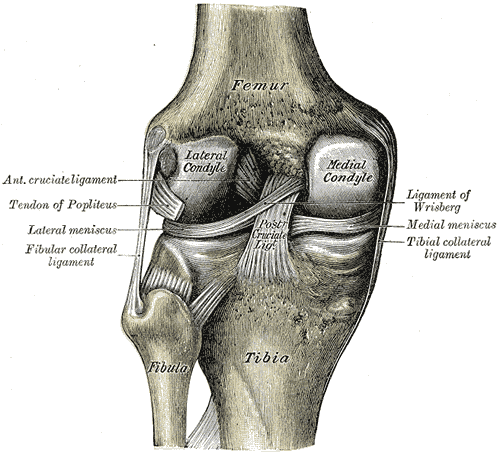
Medial Condyle Of Femur Wikipedia

Femur An Overview Sciencedirect Topics
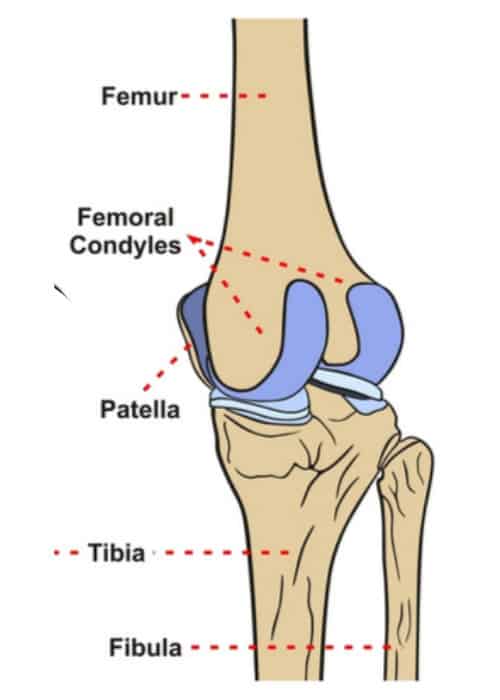
Femoral Condyle Articular Cartilage Injury Minneapolis St Paul Edina Eagan Mn
Orif Lag Screw For Lateral Medial Femoral Epicondyle Fracture
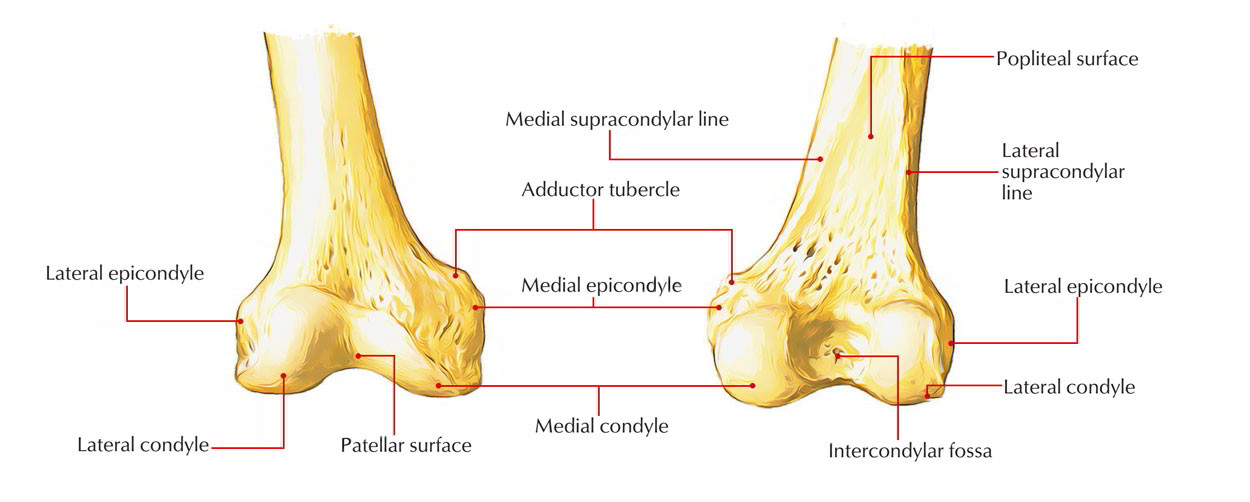
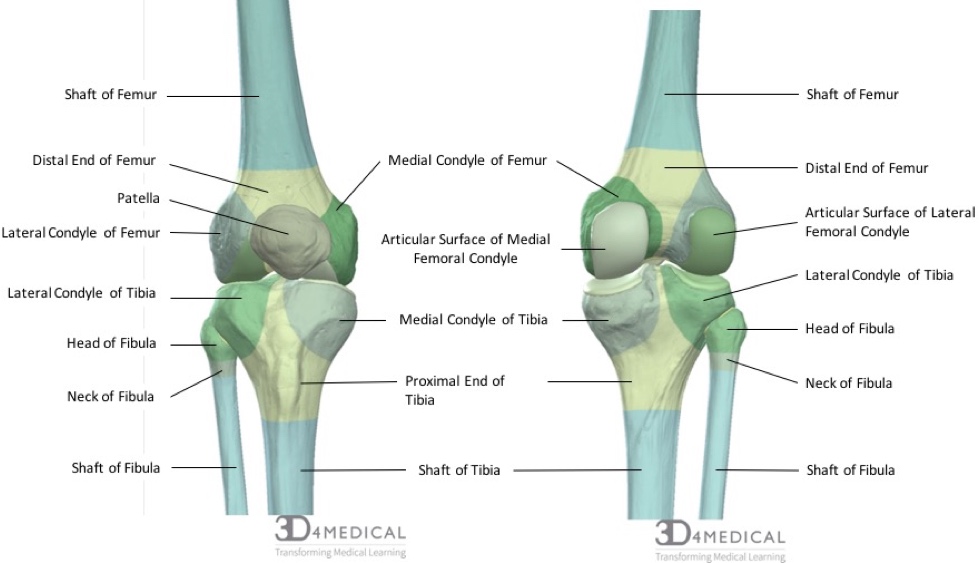
0 comments
Post a Comment